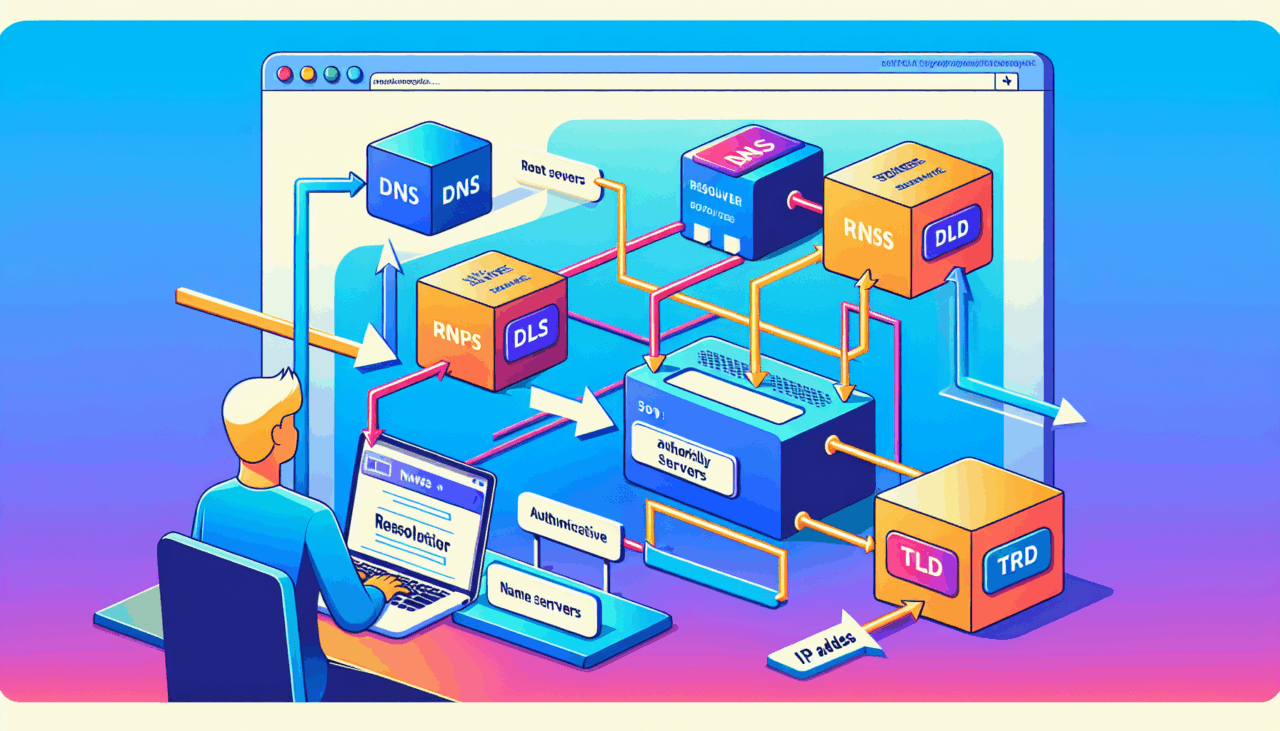In the vast, interconnected realm of the internet, where billions of devices communicate seamlessly, the Domain Name System (DNS) stands as an unsung hero. Like a sophisticated phonebook, it translates human-friendly domain names into machine-readable IP addresses. Imagine trying to memorize every phone number in your contact list—daunting, right? DNS does the heavy lifting for us, allowing you to easily type “www.example.com” instead of a string of numbers. Today, we’ll delve deep into the mechanics of DNS name resolution, unraveling its intricacies while drawing from my years of experience in the field.
Understanding the Basics: Domains and IP Addresses
At its core, DNS resolves domain names into IP addresses. Each device connected to the internet is assigned a unique IP address, akin to a postal address, ensuring data reaches its intended destination. Domains, on the other hand, are user-friendly aliases for these numeric addresses.
A Simple Analogy
Consider DNS as a multilingual translator in a bustling city where each citizen (device) speaks a different language (IP address). When you ask to visit a friend’s house (website), the translator (DNS) tells you the address in a language you understand.
The DNS Name Resolution Process: Step by Step
The DNS name resolution process involves several stages, and understanding each one is crucial to grasping the bigger picture.
1. User Initiation
When you type a domain name into your browser, the resolution process begins. The browser checks its cache for any stored IP addresses related to the domain. If found, the process ends here. If not, it proceeds to the next step.
2. Operating System Cache
The next stop is your computer’s operating system cache. Similar to the browser cache, it stores recently queried domain names. This layer helps speed up the process by avoiding repeated DNS lookups.
3. DNS Resolver Query
If the IP address isn’t found in the local caches, your computer contacts the DNS resolver, typically hosted by your Internet Service Provider (ISP). This resolver acts as an intermediary, managing the communication between your device and the vast hierarchy of DNS servers.
4. Root DNS Server
The DNS resolver queries a root DNS server. These servers, scattered globally, are the top-tier authorities in the DNS hierarchy. They don’t have the exact IP address but guide the resolver to the appropriate Top-Level Domain (TLD) server, such as “.com” or “.org”.
5. TLD Server
The TLD server, responsible for storing information about domain extensions, directs the resolver to the authoritative DNS server for the requested domain.
6. Authoritative DNS Server
The authoritative DNS server holds the definitive records for the domain. It finally provides the resolver with the requested IP address.
7. Returning the IP Address
The resolver sends the IP address back to your computer, which finally connects to the desired web server, loading the webpage in your browser.
This entire process, intricate as it may sound, occurs in mere milliseconds, ensuring a seamless browsing experience.
Real-World Scenario: Troubleshooting DNS Issues
Throughout my career, I’ve encountered numerous scenarios where understanding DNS intricacies proved vital. One memorable instance involved a major retailer experiencing downtime due to a misconfigured authoritative DNS server. Customers were unable to access their online store. By tracing the DNS resolution path, we identified the issue’s root cause and swiftly rectified it, restoring operations.
Practical Application: Configuring a DNS Server
For those eager to get hands-on, here’s a simple configuration snippet using BIND, a popular DNS server software:
zone "example.com" IN {
type master;
file "/etc/bind/db.example.com";
allow-update { none; };
};
zone "0.168.192.in-addr.arpa" IN {
type master;
file "/etc/bind/db.192.168.0";
allow-update { none; };
};
This snippet represents a basic DNS zone configuration, where “example.com” is the domain being managed. The file paths point to zone files that contain specific DNS records.
Conclusion
Understanding how DNS name resolution works is not just for network engineers or IT professionals. It empowers anyone who interacts with the internet, providing insight into the behind-the-scenes processes that make our digital world function smoothly. As I’ve often emphasized, knowledge of DNS equips you to troubleshoot issues, optimize performance, and ensure a seamless user experience. Whether you’re a seasoned professional or a curious novice, the DNS realm offers endless opportunities for exploration and learning.

Comments (0)
There are no comments here yet, you can be the first!